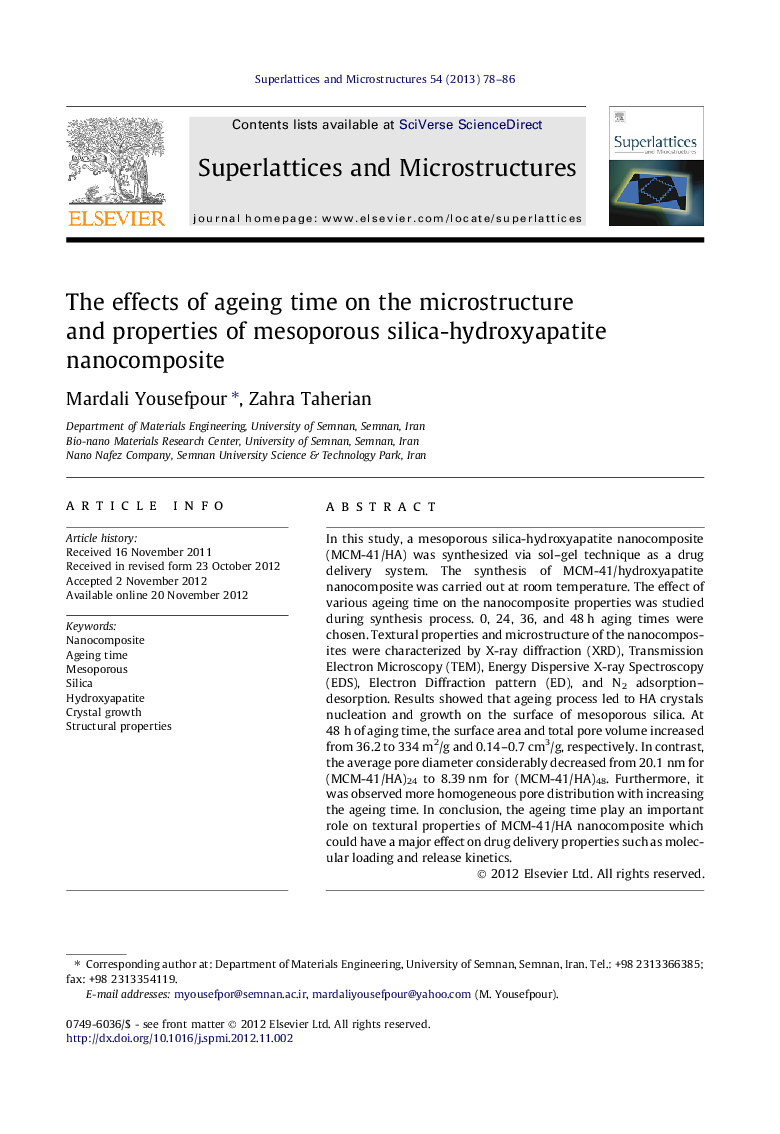| Article ID | Journal | Published Year | Pages | File Type |
|---|---|---|---|---|
| 1553747 | Superlattices and Microstructures | 2013 | 9 Pages |
In this study, a mesoporous silica-hydroxyapatite nanocomposite (MCM-41/HA) was synthesized via sol–gel technique as a drug delivery system. The synthesis of MCM-41/hydroxyapatite nanocomposite was carried out at room temperature. The effect of various ageing time on the nanocomposite properties was studied during synthesis process. 0, 24, 36, and 48 h aging times were chosen. Textural properties and microstructure of the nanocomposites were characterized by X-ray diffraction (XRD), Transmission Electron Microscopy (TEM), Energy Dispersive X-ray Spectroscopy (EDS), Electron Diffraction pattern (ED), and N2 adsorption–desorption. Results showed that ageing process led to HA crystals nucleation and growth on the surface of mesoporous silica. At 48 h of aging time, the surface area and total pore volume increased from 36.2 to 334 m2/g and 0.14–0.7 cm3/g, respectively. In contrast, the average pore diameter considerably decreased from 20.1 nm for (MCM-41/HA)24 to 8.39 nm for (MCM-41/HA)48. Furthermore, it was observed more homogeneous pore distribution with increasing the ageing time. In conclusion, the ageing time play an important role on textural properties of MCM-41/HA nanocomposite which could have a major effect on drug delivery properties such as molecular loading and release kinetics.
► Synthesis of MCM-41/HA mesoporous nanocomposite. ► Effect of aging time on pore size and pore size distribution of MCM-41/HA. ► Effect of aging time on structural order. ► Effect of aging time on specific surface area. ► Effect of aging time on HA crystals growth.
